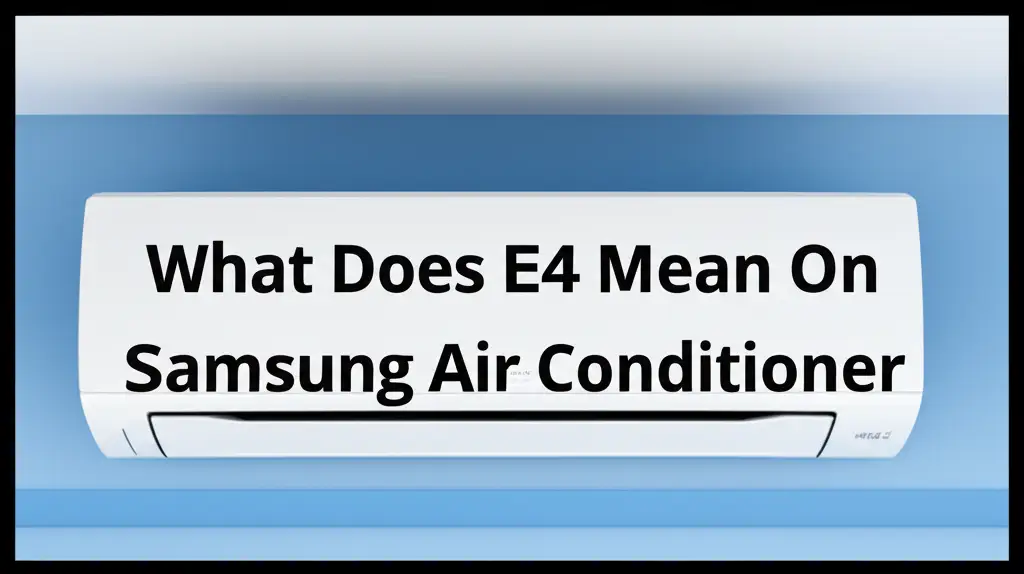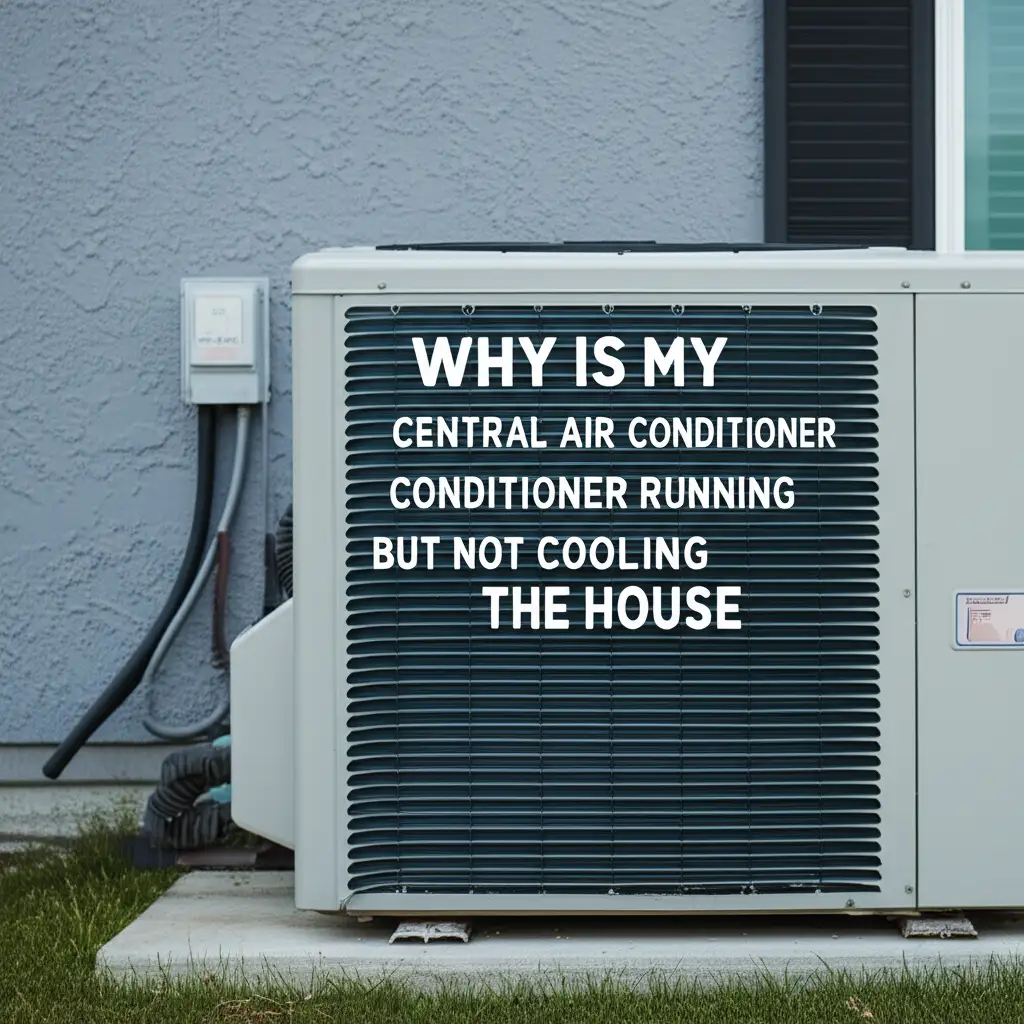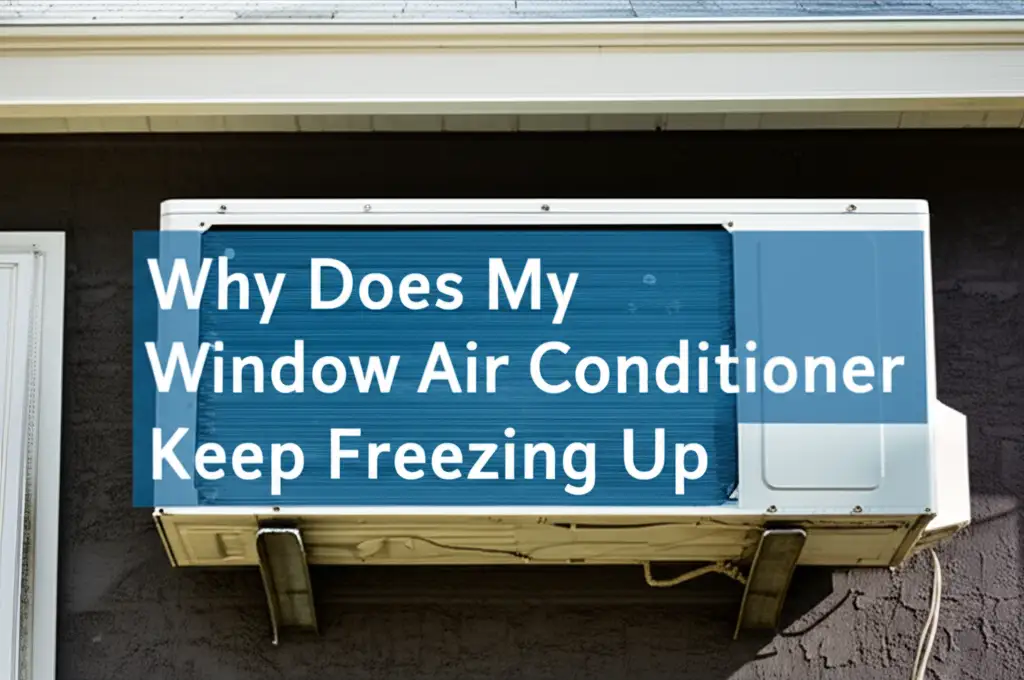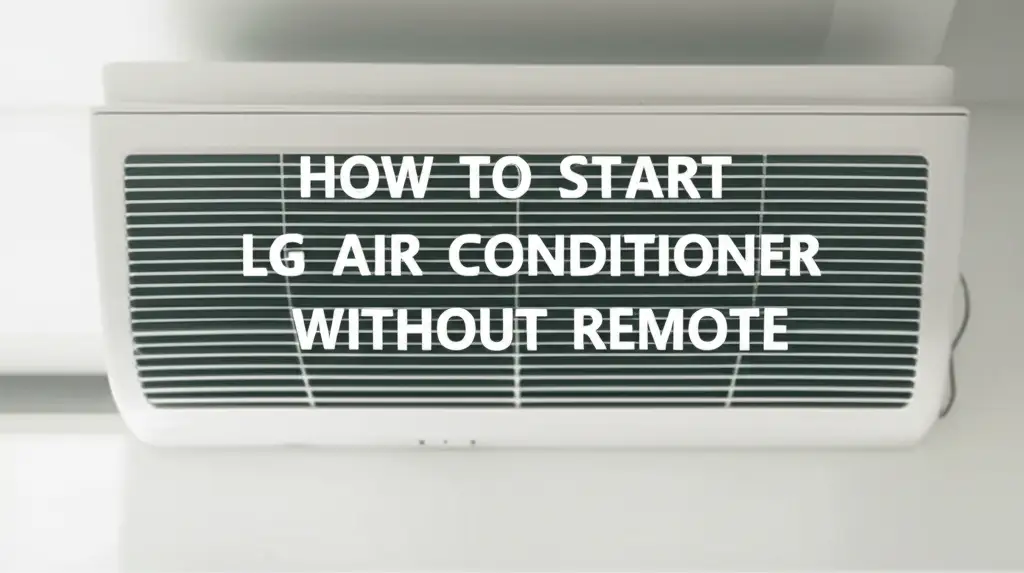· Todd Martin · Air Conditioning · 23 min read
How To Fix E4 Error On Carrier Air Conditioner
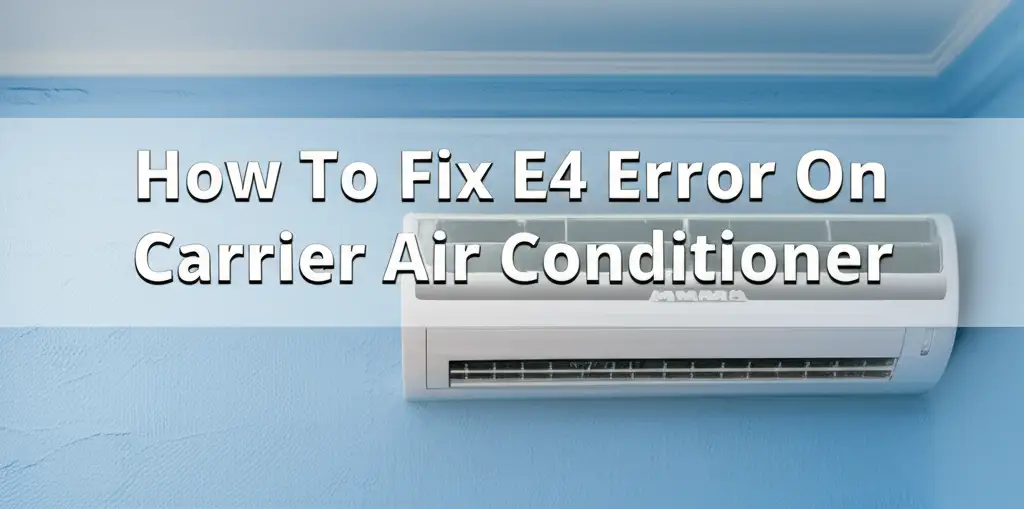
Fix E4 Error on Your Carrier Air Conditioner
Is your Carrier air conditioner displaying an E4 error code? This message can be frustrating, especially when you seek cool comfort. Many homeowners encounter this specific error. It signals a problem within your system, often related to communication or sensor issues. Do not worry. I am here to help you understand what this E4 error means and, more importantly, how to fix E4 error on Carrier air conditioner. We will explore common causes and provide step-by-step solutions. This guide will help you get your AC running smoothly again.
Takeaway:
- Identify the Problem: The E4 error usually points to a communication fault or an issue with temperature sensors in your Carrier AC.
- Basic Troubleshooting: Begin with a power reset. Check your air filters and ensure outdoor unit cleanliness.
- Inspect Wiring: Examine communication wires between indoor and outdoor units for damage or loose connections.
- Sensor Check: Problems with ambient or discharge temperature sensors can trigger E4.
- Professional Help: If basic steps fail, contact a certified HVAC technician for advanced diagnostics and repair.
The E4 error on a Carrier air conditioner typically indicates a communication fault between the indoor and outdoor units or a problem with specific temperature sensors. You can often resolve this by resetting the unit, checking wiring connections, and inspecting sensors.
Understanding the E4 Error Code on Carrier AC Units
When your Carrier air conditioner shows an E4 error, it alerts you to a specific type of problem. This code usually indicates a communication failure. The indoor unit and the outdoor unit of your AC system need to talk to each other constantly. They send signals back and forth to ensure proper operation. An E4 error means this conversation has stopped or is experiencing interference. This communication breakdown prevents your AC from cooling effectively. It is a critical signal that something needs attention within the system.
The E4 error can also point to issues with certain sensors. Modern air conditioners rely on various sensors to monitor conditions. These sensors measure temperature and pressure. If a sensor fails or sends incorrect readings, the system might interpret this as a communication problem. For instance, the outdoor ambient temperature sensor or the discharge temperature sensor might be faulty. These sensors help the unit operate efficiently and safely. A malfunction in these components can trigger the E4 code. You must address this underlying cause to resolve the error. Understanding these potential causes helps in effective troubleshooting.
The Carrier AC system’s control board interprets these signals. If it detects a persistent communication error or faulty sensor data, it displays the E4 code. This protects the system from further damage. It prevents the unit from running under incorrect conditions. The control board acts as the brain of your AC. It processes all information and makes operational decisions. Therefore, an E4 error highlights a significant disruption in the system’s ability to monitor its environment or communicate between its main components. We must investigate both communication lines and sensor integrity.
Several factors can lead to communication issues or sensor failures. Loose wiring connections are a common culprit. Vibrations or wear can cause wires to come loose over time. Electrical interference from other appliances can also disrupt communication signals. Sometimes, external elements like pests can chew through wires. Power fluctuations can damage delicate electronic components. Understanding these potential root causes helps you pinpoint the exact problem. This knowledge guides your troubleshooting efforts effectively.
Identifying the precise cause of the E4 error is the first step toward a solution. It helps you avoid unnecessary repairs. It also ensures you focus your efforts on the right area. A systematic approach to diagnosis saves time and money. Do not rush into replacing parts. Always perform thorough checks. This logical progression ensures you tackle the problem efficiently.
Initial Troubleshooting: Power Reset and Basic Checks
When you first see the E4 error on your Carrier air conditioner, a power reset is your immediate first step. This simple action can often resolve temporary glitches. Electronic devices can sometimes encounter minor software bugs or communication hiccups. A power reset clears the system’s memory. It allows all components to restart and re-establish proper communication. This is a common and effective troubleshooting method for many electronic appliances.
To perform a power reset, go to your home’s main electrical panel. Locate the circuit breaker that controls your air conditioner. It might be labeled “AC,” “Furnace,” or “HVAC.” Turn the breaker off completely. Leave it in the off position for at least 30 seconds. This ensures all residual power drains from the system. After the waiting period, flip the breaker back to the “on” position. Go back to your AC unit and check if the E4 error has cleared. This process gives your AC a fresh start.
After resetting the power, perform some basic visual checks. Start with your air filter. A dirty air filter can restrict airflow significantly. This restriction can cause your AC system to overwork. Sometimes, this strain can trigger various error codes, including communication errors, as components struggle. Remove the filter and inspect it. If it looks clogged with dust and debris, it needs cleaning or replacement. A clean filter ensures proper airflow. You can learn how to clean your air conditioner filter easily.
Next, inspect both your indoor and outdoor units. Ensure nothing obstructs the airflow around them. For the outdoor unit, check for debris like leaves, dirt, or grass clippings. These can accumulate around the condenser coils. Blocked coils reduce the unit’s efficiency. They can also cause components to overheat. This overheating might stress sensors or communication lines. Clear away any obstructions you find. A clean outdoor unit operates more effectively. Regular cleaning of your outdoor AC unit is good practice.
While inspecting the outdoor unit, also check the condenser coils. These coils are crucial for heat exchange. If they are heavily soiled, they cannot dissipate heat efficiently. This inefficiency puts a strain on the entire system. It can also cause sensors to report incorrect readings. You might consider learning how to clean your air conditioner coils to ensure optimal performance. These basic checks, including the power reset, often resolve E4 errors caused by simple, common issues. They are vital preliminary steps before diving into more complex diagnostics.
Inspecting Communication Wiring and Connections
The E4 error code on a Carrier AC often points directly to communication issues. The indoor and outdoor units rely on a set of control wires to exchange information. These wires carry signals about temperatures, operational status, and commands. If these wires are damaged or improperly connected, the communication link breaks. This broken link triggers the E4 error. It is essential to inspect these wires thoroughly.
Before you begin, always turn off the power to your air conditioner at the circuit breaker. Safety is paramount when dealing with electrical components. Once the power is off, locate the control wiring. These wires usually connect to terminal blocks inside both the indoor and outdoor units. You might need to remove access panels to see them. Look for wires labeled “C” (common), “Y” (cooling), “G” (fan), and “R” (power). Some systems may have additional communication wires.
Carefully examine the wiring for any visible damage. Look for frayed insulation, cuts, or signs of rodent damage. Pests can sometimes chew through wires. Ensure all wire connections are tight and secure. Loose connections are a very common cause of communication errors. Gently tug on each wire connected to the terminals. If a wire pulls out easily, it needs to be re-secured properly. You might need a screwdriver to tighten the terminal screws. Make sure the wires are inserted fully into the terminals.
Pay special attention to the wiring that runs between the indoor and outdoor units. This wire is exposed to external elements. It can be susceptible to weather damage or accidental nicks during landscaping. If you find any damaged sections, they must be repaired or replaced. Use appropriate wire connectors and electrical tape for any repairs. Always use wires of the correct gauge for AC systems. Improper wiring can lead to continuous issues.
Sometimes, the issue is not external damage but a loose connection at the control board itself. Check the terminal blocks on both the indoor and outdoor control boards. Ensure all wires are firmly seated. If you suspect corrosion on the terminals, gently clean them. Use a wire brush or fine-grit sandpaper. Corrosion can interfere with electrical signals. After checking all connections, replace the access panels. Then, restore power to the unit and see if the E4 error has cleared. A thorough inspection of your AC’s internal components, like a full cleaning of your Carrier air conditioner, can prevent these issues.
Diagnosing Sensor Malfunctions as an E4 Cause
Sensor malfunctions are a significant cause of the E4 error on Carrier air conditioners. Your AC system relies on various sensors to monitor its operating conditions. These sensors feed crucial data to the control board. If a sensor fails or provides incorrect readings, the system might interpret this as a communication error. The E4 code then appears. Identifying and addressing these faulty sensors is a key step in resolving the problem.
The outdoor ambient temperature sensor is one common culprit. This sensor measures the temperature of the air outside your home. This data helps the AC unit optimize its performance. If this sensor gives faulty readings, the control board receives incorrect information. This can disrupt the system’s operational logic. The system might think there is a communication problem rather than a sensor issue. This sensor is typically located in the outdoor unit. It may look like a small probe or thermistor.
Another critical sensor is the discharge temperature sensor. This sensor monitors the temperature of the refrigerant as it leaves the compressor. High discharge temperatures can indicate various problems, such as low refrigerant or an overloaded compressor. If this sensor is faulty, it might send erroneous high or low temperature readings. The control board then struggles to reconcile this data with other system parameters. This discrepancy can trigger an E4 error, as the system tries to protect itself from potential damage. You will find this sensor typically attached to the refrigerant line near the compressor in the outdoor unit.
Accessing and testing these sensors usually requires some technical knowledge. Always turn off power to the unit before opening any panels. You will likely need a multimeter to test a sensor’s resistance. Each sensor has a specific resistance value range. This value changes with temperature. You can often find the expected resistance values in your Carrier AC’s service manual. Compare your sensor’s readings to the manufacturer’s specifications. If the resistance is outside the specified range, the sensor is likely faulty and needs replacement.
Replacing a sensor involves disconnecting the old one and plugging in a new, compatible part. Ensure you use the exact replacement part recommended by Carrier. Using generic or incompatible sensors can lead to continued errors or poor performance. While replacing a sensor seems straightforward, improper handling can cause further damage. If you are uncomfortable with electrical components or lack the proper tools, consider contacting a professional HVAC technician. They have the expertise to accurately diagnose sensor issues and perform replacements safely. Ensuring your AC unit is clean and well-maintained can also prevent stress on these delicate components, learning how to clean your air conditioner effectively can prolong its life.
Issues with the Control Board and Power Supply
The control board acts as the brain of your Carrier air conditioner. It processes all sensor data, interprets commands, and manages the communication between the indoor and outdoor units. A malfunctioning control board can directly cause an E4 error. If the board itself is faulty, it cannot properly send or receive communication signals. It might also incorrectly interpret sensor readings. This failure in the central processing unit leads to system-wide issues, manifesting as the E4 code.
Diagnosing a faulty control board can be challenging. Visual inspection might reveal burnt components, signs of water damage, or bulging capacitors. These are clear indicators of a board malfunction. However, sometimes the damage is not visible to the naked eye. The board might have internal circuit failures. If you have checked all other potential causes, like wiring and sensors, the control board becomes a strong suspect. Testing a control board often requires specialized diagnostic tools and expertise.
Power supply problems can also lead to an E4 error. The control board and other components require a stable and correct voltage to operate. Fluctuations in power, insufficient voltage, or complete loss of power to certain parts can disrupt the system. For instance, if the outdoor unit’s control board is not receiving adequate power, it cannot communicate with the indoor unit. This power issue mimics a communication error, triggering the E4 code. You should check the voltage supply to both indoor and outdoor units. Use a multimeter for this task. Ensure the voltage matches the specifications outlined in your AC’s manual.
Problems with power wiring can also contribute. Loose wiring or damaged cables leading to the unit can cause intermittent power supply. This can confuse the control board. Check all power connections, from the breaker to the outdoor unit. Ensure they are secure and free from corrosion. Sometimes, the issue might stem from the power outlet or the main electrical panel itself. If you suspect an electrical issue, it is best to consult a licensed electrician. Electrical work can be dangerous without proper training.
Replacing a control board is a complex procedure. It involves disconnecting numerous wires and carefully handling delicate electronic components. The new board must be an exact match for your specific Carrier model. Using an incorrect board can cause more damage. After replacement, the system may require specific programming or configuration. This step is usually unique to each model. For these reasons, replacing a control board or troubleshooting power supply issues beyond basic checks is best left to a certified HVAC technician. They possess the necessary diagnostic equipment and knowledge to safely and effectively address these critical components.
Advanced Troubleshooting and When to Call a Pro
After performing basic checks, inspecting wiring, and looking at sensors, you might still face the E4 error. This indicates a more complex underlying problem. At this point, advanced troubleshooting becomes necessary. However, many advanced diagnostic steps require specialized tools and deep technical knowledge. Attempting these without proper training can lead to further damage to your Carrier AC unit or even personal injury. This is when you should seriously consider calling a professional HVAC technician.
One advanced area involves checking the refrigerant pressure. While not a direct cause of E4, extremely low or high refrigerant levels can sometimes stress the system. This stress might indirectly affect sensors or even the control board, leading to an E4 error. Technicians use gauges to accurately measure refrigerant pressure. They can also identify leaks. A refrigerant leak requires professional repair and recharging. This is not a DIY task due to the specialized equipment and environmental regulations involved.
The compressor itself could be malfunctioning. The compressor is the heart of your AC system. If it is struggling or failing, it can impact the entire system’s operation. This includes sensor readings and communication signals. A technician can test the compressor’s electrical components and its overall health. Issues like a faulty start capacitor or internal compressor problems can be subtle. They often require an expert diagnosis. You can typically only confirm these issues with professional diagnostic tools.
Communication protocols and software issues can also be culprits. Modern AC units use complex digital communication. Sometimes, a software glitch or a communication protocol mismatch can cause the E4 error. Technicians have diagnostic software and tools specific to Carrier systems. They can connect to your unit’s control board to read detailed error logs. These logs provide specific insights that are not available through simple error codes. They can also reprogram or update the control board’s firmware if necessary. This level of diagnosis is beyond what most homeowners can perform.
Calling a certified HVAC professional ensures your Carrier AC is repaired correctly and safely. They have the experience to quickly pinpoint the exact cause of the E4 error. They carry the necessary tools, replacement parts, and diagnostic equipment. They also understand all safety protocols when working with electrical systems and refrigerants. Attempting to fix complex issues yourself could void your warranty. It could also lead to more expensive repairs in the long run. Trusting a professional saves you time, money, and stress. If your window air conditioner turns off by itself, for example, a professional can also help diagnose and fix these issues.
Preventing Future E4 Errors Through Regular Maintenance
Regular maintenance is the most effective way to prevent the E4 error and other issues with your Carrier air conditioner. A well-maintained unit runs efficiently. It also experiences fewer breakdowns. Proactive care addresses small problems before they escalate into major failures. This saves you money on costly repairs and extends the lifespan of your AC system. Establishing a routine maintenance schedule is crucial for your unit’s health.
One of the simplest yet most impactful maintenance tasks is regularly cleaning or replacing your air filter. A dirty filter restricts airflow, forcing your system to work harder. This extra strain can lead to overheating. It can also cause components to fail prematurely. Clean filters ensure proper airflow and system efficiency. I recommend checking your filter monthly. Replace or clean it every 1-3 months, depending on usage and household conditions. You can find guides on how to clean your air conditioner filter easily online.
Cleaning your outdoor unit is another vital step. The outdoor condenser coil can collect dirt, leaves, and debris. This accumulation hinders heat dissipation. When the coil is dirty, the unit struggles to release heat. This can lead to increased pressure and temperature within the system. These conditions stress sensors and communication components. Clear away any obstructions from around the unit. Regularly hose down the condenser fins to remove surface dirt. For a deeper clean, consider professional cleaning of your air conditioner coils.
It is also wise to check the drain line regularly. The condensate drain line removes moisture from your indoor unit. If this line gets clogged with algae or debris, water can back up. This overflow can damage electrical components, including sensors and wiring. Pour a cup of distilled vinegar down the drain line every few months. This helps prevent biological growth. A clear drain line ensures proper drainage and protects your system. Learning how to clean your air conditioner drain line effectively is a good skill.
Beyond these DIY tasks, schedule professional HVAC maintenance once a year. A certified technician will perform a comprehensive check of your Carrier AC unit. They will inspect electrical connections, test refrigerant levels, lubricate moving parts, and calibrate thermostats. They can identify worn components or early signs of trouble. This preventative check can catch potential sensor failures or communication issues before they trigger an E4 error. Professionals offer a thorough inspection. They ensure all parts work optimally. This annual tune-up is a smart investment in your AC’s longevity and reliability. It truly pays off in preventing unexpected breakdowns.
The Importance of Professional HVAC Diagnosis
While many E4 error causes can be addressed by a homeowner, some situations demand professional intervention. Understanding when to call a certified HVAC technician is key. It ensures your Carrier AC system gets the right care. It also protects your investment. Professional diagnosis offers precision and safety that DIY efforts cannot always provide. Do not hesitate to seek expert help when the problem is complex or beyond your comfort level.
A professional HVAC technician brings specialized knowledge to the table. They have extensive training in air conditioning systems. This includes understanding the intricate workings of Carrier units. They know the specific diagnostic procedures for various error codes. Their expertise allows them to quickly pinpoint the root cause of the E4 error. They can distinguish between a simple sensor issue and a more complex control board failure. This accurate diagnosis saves time and prevents unnecessary part replacements.
Technicians use advanced diagnostic tools. These tools are not typically available to homeowners. They include multimeters for precise electrical testing, refrigerant gauges, and specialized software. This software can interface directly with your AC’s control board. It can read detailed fault codes and performance data. This level of insight helps them identify issues that are invisible to the naked eye. For example, they can detect intermittent communication failures or subtle voltage drops. These tools ensure a comprehensive and accurate assessment.
Safety is another critical reason to call a professional. Air conditioning units involve high voltage electricity and pressurized refrigerants. Working with these components without proper training can be extremely dangerous. There is a risk of electrical shock or refrigerant exposure. Certified technicians follow strict safety protocols. They have the right protective gear and tools. They ensure that all repairs are performed safely and correctly. This protects both you and your AC system.
Professional repair ensures long-term solutions. A DIY fix might temporarily resolve the E4 error. However, if the underlying cause is not fully addressed, the problem will likely recur. Technicians perform thorough repairs. They use genuine replacement parts. They also provide warranties on their work. This gives you peace of mind. They can also offer advice on preventing future issues. This comprehensive approach ensures your Carrier AC runs reliably for years to come. Ultimately, investing in professional diagnosis and repair for complex E4 errors is a wise decision.
When E4 Lingers: Identifying Underlying Systemic Issues
If the E4 error on your Carrier air conditioner persists after trying all the troubleshooting steps, it suggests a deeper, systemic issue. This means the problem is not a simple fix. It points to a more fundamental malfunction within the AC unit. These issues often require in-depth analysis and specialized equipment to diagnose. This is a clear indicator that you need professional help. Do not ignore a persistent E4 code.
One potential systemic issue is a failing outdoor unit fan motor. While not directly a communication error, a struggling fan motor can cause the outdoor unit to overheat. Overheating can stress components like sensors and the control board. This stress can lead to intermittent communication failures or sensor malfunctions. The system might then register an E4 error as a safety measure. A technician can test the fan motor’s capacitors and motor windings. They can determine if the motor is failing.
Another complex issue could be a faulty expansion valve or a partially clogged refrigerant line. These problems affect the refrigerant flow. Improper refrigerant flow can lead to unusual pressures and temperatures throughout the system. Sensors might report conflicting data to the control board. The control board, in turn, might interpret this as a communication breakdown. This scenario requires precise refrigerant pressure measurements and system evaluation. This is a task for an HVAC professional.
Age of the unit can also contribute to persistent E4 errors. Older Carrier AC units are more prone to component wear and tear. Wires can degrade, solder joints can crack, and control board components can simply reach the end of their lifespan. An aging system might develop multiple small issues that cumulatively trigger the E4 error. Sometimes, repairing an old unit extensively might not be cost-effective. A technician can help you weigh the cost of repairs versus replacement.
Ultimately, a persistent E4 error suggests a problem that is difficult to pinpoint without expertise. It could be a combination of issues. It could also be a subtle defect in a major component. Professionals have the diagnostic tools and experience to trace these complex problems. They can access service manuals and technical bulletins specific to your Carrier model. These resources contain detailed diagnostic flowcharts for specific error codes. They ensure no stone is left unturned. Trusting an expert ensures your AC system is thoroughly evaluated and correctly repaired. This prevents recurring problems and provides lasting comfort.
FAQ Section
What does the E4 error specifically mean on a Carrier AC?
The E4 error code on a Carrier air conditioner primarily indicates a communication failure between the indoor and outdoor units. It can also point to a problem with specific temperature sensors, such as the outdoor ambient temperature sensor or the discharge temperature sensor, which send faulty data to the main control board.
Can I fix the E4 error myself?
Yes, you can often fix the E4 error yourself by performing basic troubleshooting steps. These include a power reset, checking and cleaning air filters, inspecting outdoor unit cleanliness, and examining communication wiring for loose connections or visible damage. More complex issues require professional help.
How do I reset my Carrier air conditioner to clear the E4 error?
To reset your Carrier AC, go to your home’s electrical panel. Locate the circuit breaker labeled for your air conditioner and turn it off. Wait at least 30 seconds to allow the system to fully discharge. Then, flip the breaker back on. This should reset the system and clear temporary errors.
What if cleaning and resetting do not fix the E4 error?
If cleaning, checking connections, and resetting the unit do not resolve the E4 error, the issue is likely more complex. It could involve a faulty sensor, a problem with the control board, or an issue with the power supply. At this point, it is best to call a certified HVAC technician for professional diagnosis and repair.
How much does it cost to fix an E4 error on a Carrier AC?
The cost to fix an E4 error varies widely depending on the underlying cause. A simple wiring fix or filter replacement might cost very little. Replacing a faulty sensor could be around $100-$300. A new control board or complex electrical repair can range from $300-$800 or more, including labor.
How can I prevent the E4 error from happening again?
Regular maintenance is key to preventing future E4 errors. This includes routinely cleaning or replacing air filters, keeping the outdoor unit free of debris, and scheduling annual professional HVAC tune-ups. These steps ensure your system runs efficiently and helps identify potential issues before they cause breakdowns.
Conclusion
Encountering an E4 error on your Carrier air conditioner can be a frustrating experience, but it does not have to be a permanent one. We have explored the common reasons behind this specific error code. It often points to communication breakdowns or faulty sensors. We walked through several practical steps you can take to diagnose and fix E4 error on Carrier air conditioner. Beginning with a simple power reset and thorough cleaning checks can resolve many issues. Inspecting your wiring and verifying sensor integrity are also crucial steps.
Remember, prevention is always better than cure. Regular maintenance, including cleaning filters and the outdoor unit, significantly reduces the likelihood of such errors appearing. If your troubleshooting efforts do not clear the E4 code, do not hesitate to call a certified HVAC professional. Their expertise, specialized tools, and knowledge of complex systems ensure a safe and effective repair. They can pinpoint underlying issues that are not apparent to the untrained eye. Ultimately, understanding your Carrier AC’s signals and taking appropriate action helps maintain your home’s comfort.


